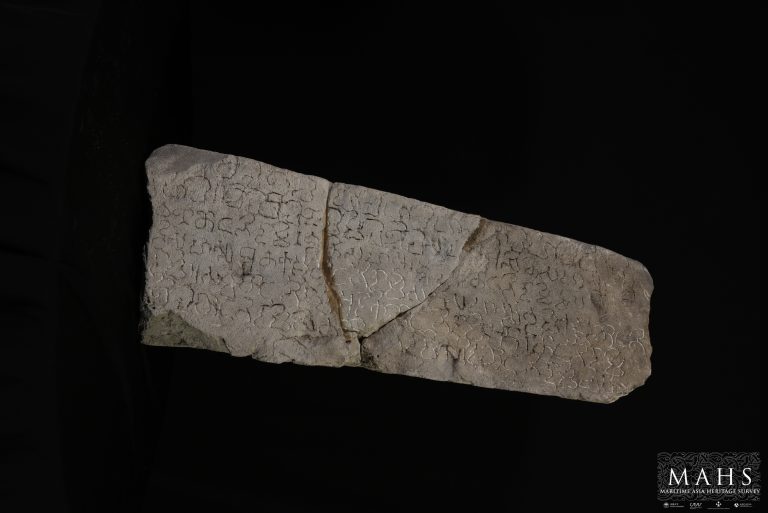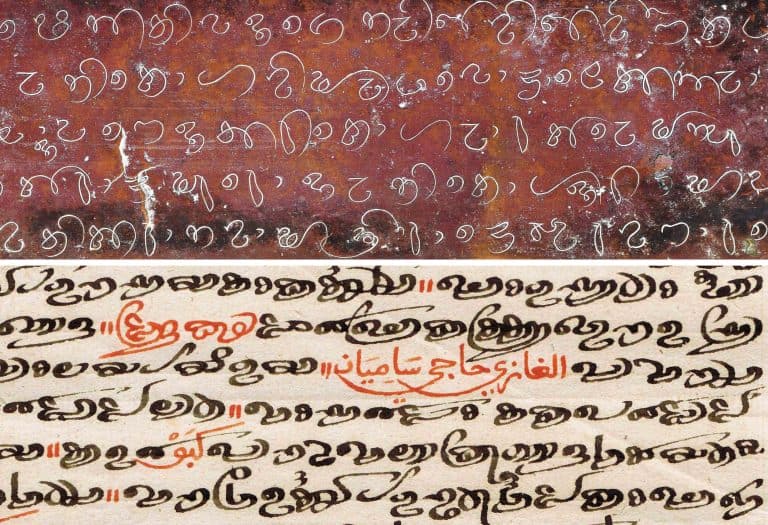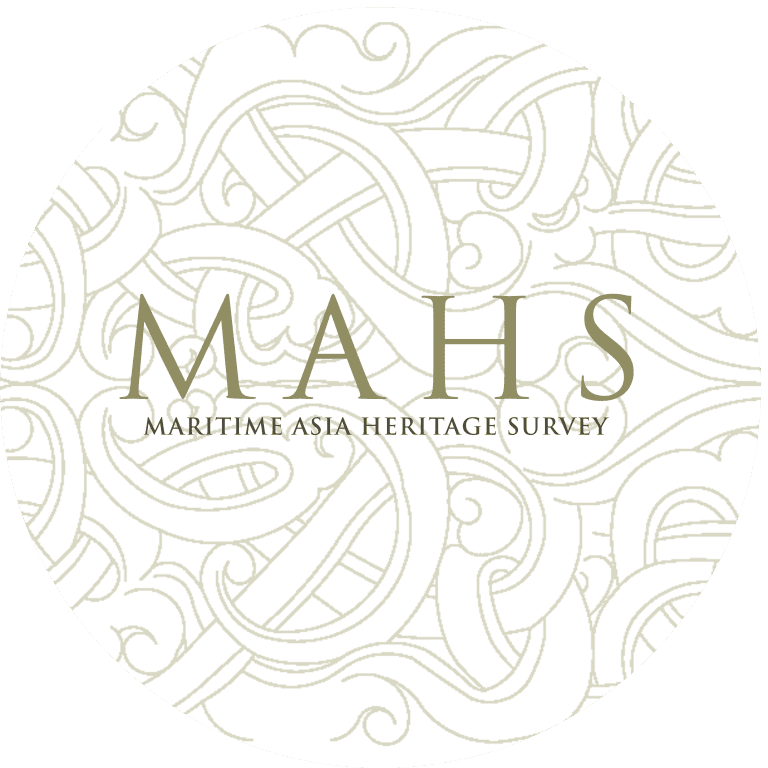YANAGISAWA Masayuki
Center for Southeast Asian Studies, Kyoto University
Fieldnotes are a critical element of research material. In the field of cultural anthropology, they comprise the primary source upon which ethnographies are based. They are also an important component in the source. Bases of other fields in area studies. Consisting of observation and interview records, memos, sketches, and photographs taken in the field, fieldnotes can provide unique documentation of local conditions at a particular point in time and/or over a period of time. Only a small portion of the information collected in fieldnotes, however, is published in the final products of research outcomes. In many cases, the vast amount of fieldnotes is not used and tend to disappear and thus become lost to future scholarship after a researcher’s retirement.
Kyoto University has conducted overseas academic research activities since before WWII. The Center for Southeast Asian Studies (CSEAS), established in 1963, contributed substantially to this, with researchers conducting fieldwork and accumulating fieldnotes across Southeast Asia and beyond (Fig. 1). Recognizing the risk of losing valuable fieldnotes collected by CSEAS staff since the 1970s, the former Center for Integrated Area Studies launched the Field Archive Project (FAP) in 2011 to make a variety of materials obtained in the field widely accessible.
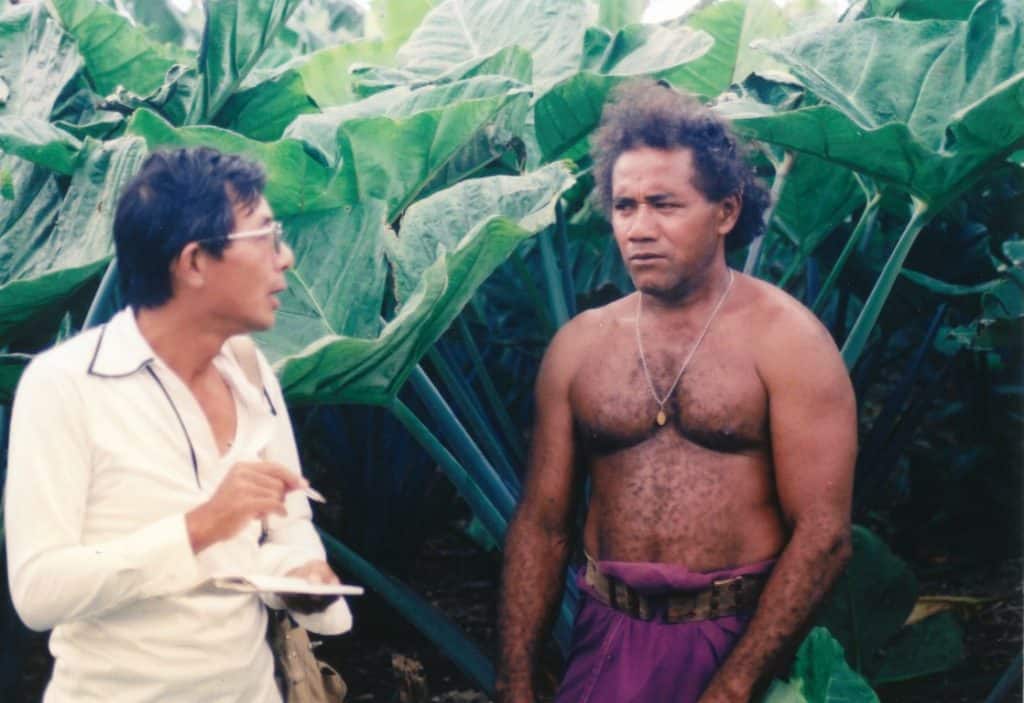
Field Archive Project (FAP): Preserving Data, Opening up a New Data Field
Fieldnotes are used for various purposes, for example, to verify ethnographic description, to ensure transparency, to understand the basis for a researcher’s understanding of the field, and to collect information about a specific place at a specific time. Among these, FAP focuses on the use of fieldnotes as local information. As such, the project values the potential of fieldnotes to contain previously undocumented or unavailable information about a locality.
The project has initially targeted fieldnotes recorded by natural science researchers at CSEAS since the 1970s. The natural sciences include geography, ecology, hydrology, agronomy, and other related research fields. The fieldnotes include information about the natural environment (such as topography, soils, and vegetation) and subsistence livelihood systems that rely on natural resources (mainly agriculture, forestry, and fisheries). The field sites cover a wide range of areas from Asia to Africa, with Southeast Asia as the major region. People in these sites, especially in rural areas, have primarily relied on subsistence livelihood systems and the use of natural resources, which is closely related to the economic, social, and cultural background of the places. Therefore, fieldnotes can be used not only to learn about the natural environment and ways of life, but also to reconstruct other aspects of local history.
Few records about the natural environment and subsistence livelihood systems of the time exist from these regions. By supplementing other available data, such as past satellite images, aerial photographs, and statistical data, fieldnotes have the potential to provide not only a more microscopic picture of local conditions, but also offer insights into patterns of land use, ecological change, and human behavior. The FAP was launched to create a database of fieldnotes that could serve as an archive for these various purposes.
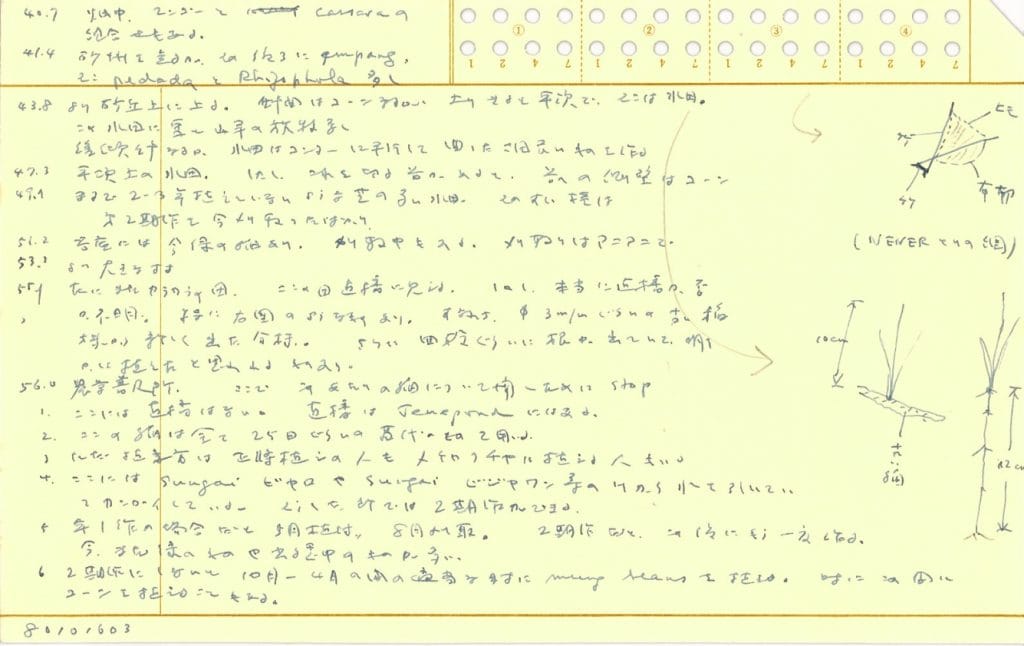
(Recorded in Sulawesi, Indonesia, on October 16, 1980)
Takaya Yoshikazu Fieldnotes: Visualizing Fieldwork
The first materials archived by the FAP are the fieldnotes of Takaya Yoshikazu, who worked at CSEAS from 1967 to 1995. Takaya organized his fieldnotes by writing each chunk of information on a single card (Fig. 2). The cards precisely describe the topography, vegetation, soils, planted crops, land use, water conditions, agricultural technologies, and other details of his field sites, together with the time and location of recording. In addition to landscape observations, the notes include interviews with farmers about the annual agricultural calendar and historical background of each region, with village chiefs about the history of development in their villages, and with local government officers about development projects in the area.
The FAP first inputted the handwritten text on the cards into digital files. It then organized the accompanying photos, illustrations, and supplemental data before having Takaya verify the information. The transcribed information was further broken down by time and location, and a database system was built to visualize each set of information on a map. The result is the FieldNote Archive, which can be viewed at: https://fieldnote.archiving.jp/ In this system, information for each location is placed on an Open-Source map with a time slider function and a keyword search tool (Fig. 3). This makes it possible to use the fieldnotes as local information that is “stamped” a specific time and location.
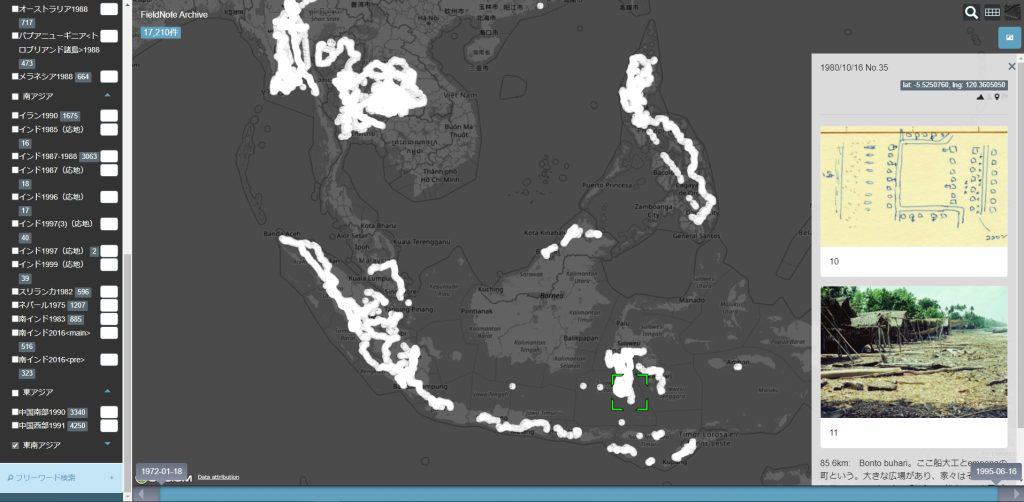
Text Analysis of Fieldnotes
As mentioned earlier, FAP uses fieldnotes by natural sciences researchers. One reason for this is that the project hoped to avoid “to some extent” the epistemological and ethical problems associated with the relationship between fieldnotes, and ethnography often debated in cultural anthropology. However, not all such sensitive issues can be dispelled simply because the records are from natural sciences. Therefore, the project also considered the possibility of eliminating the arbitrariness of the researcher by using text analysis of the fragmented records of fieldnotes.
To conduct text analysis, the project extracted vocabulary from Takaya’s fieldnotes and applied the Latent Dirichlet Allocation topic model to detect potential topics, thereby statistically analyzing the relationships between individual pieces of information in the fieldnotes. From this analysis, it was found, for example, that descriptions of rice can be categorized by technology or institution, or that relationships can be found between the history of migrants and sago palm factories in Sumatra, Indonesia, which at first glance do not seem to be substantially related. Text analysis reminds us that fieldnotes are an important source of raw information that should, like all information, be analyzed within various contexts.
Fieldnotes have great potential as an untapped information source. The Field Archive Project looks forward to further exploring the potential of fieldnotes and their use for innovative new approaches and projects, approach and we welcome the input of scholars and researchers from the field to the archives.

